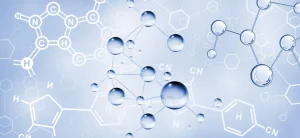Alkynes decomposition reaction
Ring closure recombination of alkynes
The metal-catalyzed breakage and reorganization of the carbon-carbon triple bond to form a new alkyne is known as an alkyne complex reaction.
Jacobsen-Katsuki epoxidation reaction
A reaction in which an epoxide is synthesized asymmetrically from oxidized (Z)olefins using a Mn(III)salen catalyst.
Commonly used catalysts —-(R,R)-Jacobsen catalysts
Jacobsen hydrolysis kinetic splitting

Reactions in which phenols, enols, azoles, alkynes and other C-, O- and N-negative ions are arylated by the action of trivalent or pentavalent organic bismuth reagents. Such reactions can be carried out under neutral, acidic or basic conditions.N arylation can be achieved by reaction with Ar3Bi (which can be prepared by reaction of ArLi or ArMgX with bismuth trichloride) in the presence of copper acetate, and O arylation of alcohols can be obtained by reaction with Ar4BiF in the presence of copper acetate.
Low-valent titanium [e.g., Ti(0) generated by TiCl3/LiAlH4] catalyzes the carbonyl preparation of olefins. This reaction is a single electron transfer course.
The Ti-catalyzed exchange of Grignard reagent with an olefin or alkyne yields a new Grignard reagent, which is then subjected to a Grignard reaction with some electrophilic reagent (oxygen, carbon dioxide, aldehyde, nitrile, etc.). Various substituted furans can be prepared by this reaction of end-silyl-protected alkynes and nitriles.

Cr-Ni bimetallic-catalyzed oxidative addition of alkenyl, propargyl, and alkynyl halides to give organic trivalent chromium reagents followed by nucleophilic addition of aldehydes to give alcohols.
Decarboxylation coupling reactions are chemical reactions that utilize metal catalysts to decarboxylate carboxylic compounds and generate new carbon-carbon bonds at the original carboxylic acid site. Broadly speaking, the metal-catalyzed decarboxylation of carboxylic acids and the formation of carbon heteroatom bonds (carbon-oxygen, carbon-sulfur, carbon-nitrogen bonds, etc.) can also be categorized as decarboxylation coupling reactions. Decarboxylation reactions in conventional organic chemistry primarily utilize the generation of free radicals from oxidized carboxylic acids. The decarboxylation coupling reactions of aryl and alkenyl (Csp2-COOH) carboxylic acids utilize metal catalysis to achieve redox-neutral decarboxylation and to generate metal-organic intermediates for coupling and bonding to electrophilic reagents or, under oxidizing conditions, to nucleophilic reagents. Although some activated alkyl carboxylic acids can undergo non-radical decarboxylative coupling through the process of generating metal-organic intermediates catalyzed by metal catalysts. However, in response to the difficult problem of metal catalyst-catalyzed decarboxylation of alkylcarboxylic acids (Csp3-COOH), the decarboxylative coupling reactions of some alkylcarboxylic acids still need to be carried out via a free radical reaction mechanism. It is worth pointing out that recently, MacMillan et al. successfully combined a photoredox catalyst with a nickel catalyst to achieve decarboxylative coupling of amino acids and non-activated alkyl carboxylic acids by combining photocatalysis and metal-organic catalysis in a hybrid means.

Kagan-Molander coupling reaction
In the late 1970s, H. Kagan systematically investigated the reduction properties of divalent lanthanide metal iodides, and on the basis of this study, it was found that the reaction of bromoalkanes, iodoalkanes, or TsOalkanes with aldehydes and ketones in the presence of twice the equivalent amount of samarium dioxide could produce the corresponding alcohols. The initial reaction conditions were 24 hours at room temperature with tetrahydrofuran as the solvent or a few hours at reflux.Kagan also found that the addition of catalytic amounts of ferric chloride to the reaction significantly reduced the reaction time, and this method was further developed by G.A. Molander. In 1984, G.A. Molander reported for the first time the intramolecular substitution of ω-iodo esters in the presence of samarium diiodide and catalytic amounts of trivalent iron salts, and furthermore the formation of complex polycyclic aliphatic hydrocarbons. Such reactions are now collectively referred to as Kagan-Molander samarium diiodide-mediated couplings.
Sharpless asymmetric double hydroxylation reaction
Osmium tetroxide oxidation, Upjohn double hydroxylation reaction mechanism diagram
In the presence of catalytic amounts of osmium tetroxide and a co-oxidizer, olefins are oxidized to o-diols. The conversion of olefins to o-diols, which is difficult to achieve with other reagents, is carried out gently and smoothly by this method. Although osmium is relatively expensive, it is frequently used.
Commonly used oxidizing agents —-Osmium tetroxide – potassium ferricyanide
Common oxidizing agents —-OsO4/NMO
Kochi-Fürstner Cross Coupling
The coupling reaction of halogenated aromatic hydrocarbons, aryl trifluoromethanesulfonates and aryl sulfonates with Grignard reagent in the presence of an iron catalyst.

